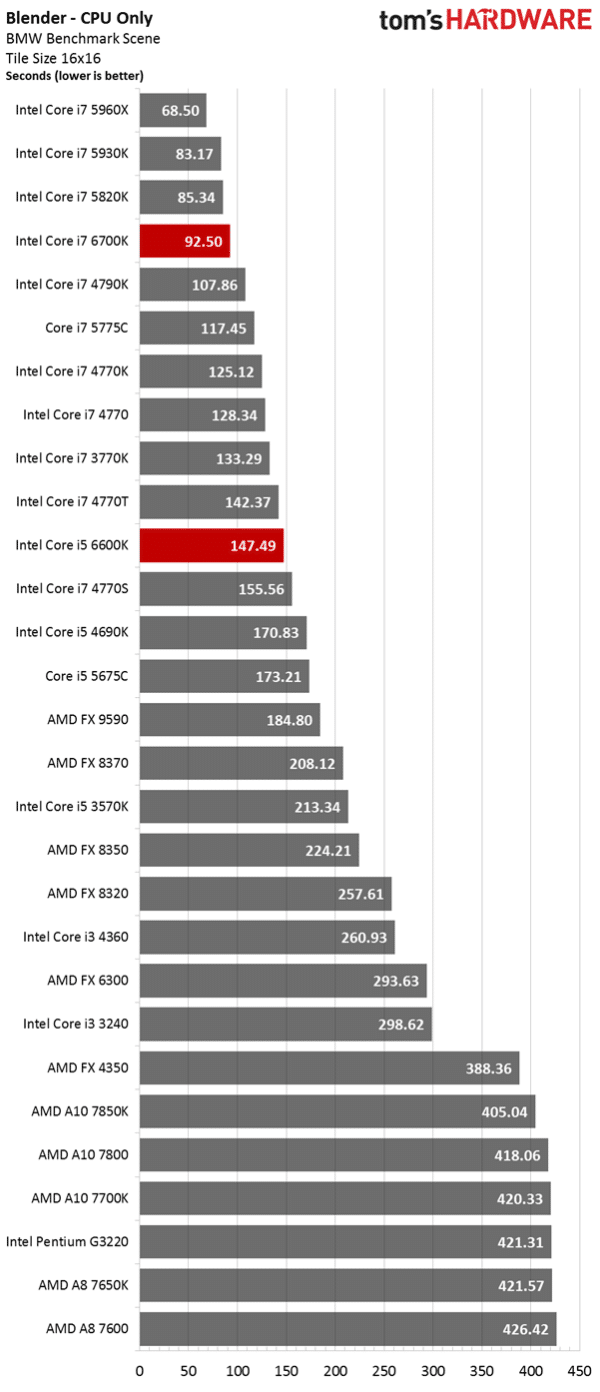

The 12600K is just shy of FIVE TIMES FASTER! A combination of both faster single threaded performance and more cores means you get lightyears more out of the new chip.

The real kicker though is multi-threaded. It’s worth noting that the 10400F is considerably slower single-core than the 10600K that I sadly don’t have access to, hence its proximity to the older 6600K. In the single threaded test in Cinebench R23, the 12600K offers just shy of TWICE AS MUCH PERFORMANCE! TWICE! That’s pretty crazy, and I think goes a long way to explaining at least part of that gaming performance advantage. But, if you thought the gaming results were rough, you won’t believe these…
#I5 6600K CINEBENCH UPGRADE#
It’s still perfectly fine, but is clearly showing its age and an upgrade to even a 10400F would offer a sizable performance leap with this class of GPU.
#I5 6600K CINEBENCH 1080P#
So, with an RTX 3060 at 1080p anyway, the 6600K can offer usable, if a little lacklustre performance in most titles. A fair dip from the next lowest at 144 FPS average and 103 FPS in the 1% lows, but not too bad.įinally in Watchdogs Legion, this takes the Cyberpunk approach but even more drastic on the average performance, netting less than half of the 12600K’s average and almost a third of its 1% low performance too! Again, while still playable for sure, you go from having a smooth, responsive and easy-to-enjoy experience on any of the other chips, to a choppier, more sluggish time on the 6600K. Again, still not impossible to play, but can be a touch frustrating at times.įortnite actually did pretty well – again there was a little bit of hitching and stuttering but on the whole was playable with a relatively close 123 FPS average and 63 FPS in the 1% lows. It wasn’t unplayable or anything, but it was a less-than-perfect experience for sure.Ĭyberpunk has a similar trend, with a lower but not impossible average, and a starkly lower 1% low figure that’s a clear indication of a bottleneck. It nets just 151 FPS average, which on the face of it is still absolutely fine, but more importantly the 1% lows dip to just 72 FPS and I can tell you from my experience playing it, it was stuttering like mad. No game can show that quite as well as CSGO, where there was an appreciable difference in the gaming experience on the 6600K. You do have to make sure nothing else is running in the background though, as those just 4 cores and 4 threads are stretched thin here. Microsoft Flight is the same story, a sizable and noticeable drop in performance using the older i5, albeit still far from unplayable at just shy of 80 FPS average. What’s also interesting is to look at the CPU Render performance, where all of the other chips exceed their average FPS by a considerable amount, except the 6600K. Of course, 96 FPS average is still plenty to play the game so it’s no real issue but compared to the much newer 12600K which is hitting just shy of 150 FPS average, that’s a sizable gap.
#I5 6600K CINEBENCH SERIES#
Starting off with Shadow of the Tomb Raider, as I found in my previous video comparing three generations of ‘400’ series i5’s, the newer CPUs like the 12600K and Ryzen 5600X performed functionally identically, with only the 10400F lagging slightly behind the rest. Let’s start with the gaming results, I’m testing at 1080p at what I think are realistic settings for each game – generally around medium to high – and I’m testing with an RTX 3060 as that’s a pretty reasonable choice for either of these chips.

I’m really interested to see how the 6600K holds up against its much younger great-great-great-great-grandchild, the 12600K. That’s an impressive claim, especially considering the 12600K has a further 6 hyperthreaded performance cores too. AMD was launching their third generation of FX CPUs based on their Piledriver architecture, which was fine but far from truly competitive.įast forward 7 years and we finally have another process node shrink, a major core design change, a major architecture shift in fact, and actually support for both DDR4 and the new-fangled DDR5! The 12600K actually boasts a specific, yet impressive claim, which is that the 4 efficiency cores it contains should be as fast if not faster than the 4 Skylake cores in the 6600K, all while drawing significantly less power. Sporting the then brand-new DDR4 memory, a freshly shrunken process node, and a reasonable enough price tag, it was somewhat the go-to chip (even if the previous generation 4670K wasn’t exactly miles slower). Back in late 2015, if you wanted a mid range CPU for your new gaming PC, the i5-6600K was a pretty clear choice.


 0 kommentar(er)
0 kommentar(er)
